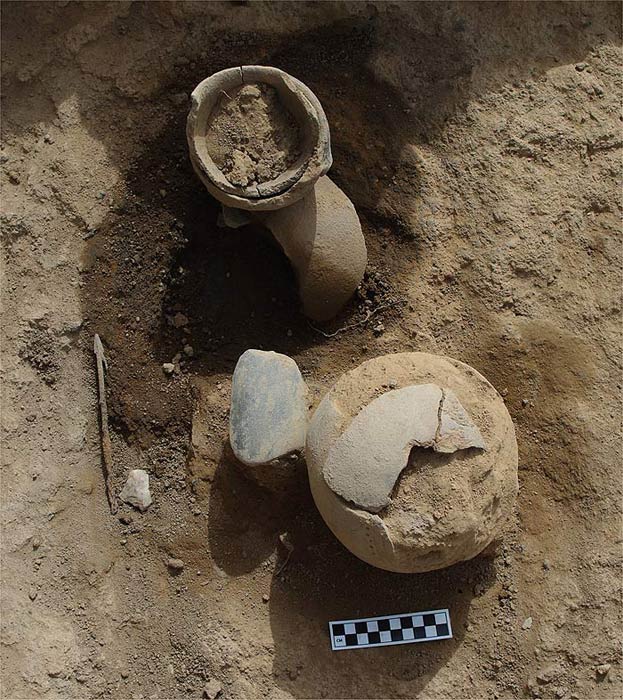Research & FieldworkOnly a few would imagine that Kasana was once a widely known place. Some have spoken its name with expectations; others uttered it with fear and cautiousness. The last group perhaps included the original Kassenas. Both historical sources and oral records inform about the raiding Zabarimas, invading the area from Niger on horse in the 1860s. This warrior-dominated Muslim society had experienced the potential of slave trade and engaged itself into slave-raiding activities. The main costumers were the Ashanti rulers. Kasana functioned as the “capital” of the Zabarimas from around 1874 to 1887, when it was moved further north to Sati, present day Burkina Faso. It is unclear what fame Kasana had before the Zabarimas. Slave raiding has become the main and only event in the social memory of the Kassenas and their neighbours, whipping out any traces of more ancient events. Numerous settlement mounds of significant size dotting the area suggest that the area used to be densely occupied even before the Zabarimas. Modern villagers account that Kasana was a famous market place, attracting people from the whole region. Slaves were also among the commodities for sale. In 2003 UNSECO initiated the International Slave Route Project. Under this aegis, scholars from the Department of Archaeology, University of Ghana - namely James Boachie-Ansah, Yaw Bredwa-Mensah & John Ako Okoro, with students - undertook two weeks of research. The Upper West Region is one of the archaeologically least investigated areas in Ghana. This likely reflects not only lack of scientific interest, but also the actual scarcity of cultural remains. The area around Kasana is an exception, marked with a variety of cultural remains, reflecting nearly every aspect of human life. Thus, once more, Kasana came into scientific light as a starting point for regional research (also aimed beyond the issues related to slave trading). A team of archaeologists from the University of Copenhagen together with Ghanaian collaborators and students carried out excavations in a nearly 3 m tall settlement mound and in a number of slagheaps. These activities were followed by surveys and mapping, recording of ethnographic data and of next to extinct local traditions. The earliest date obtained was associated with a slagheap, indicating that iron production and settling could be dated back to 1750s. Iron production inevitably leads to deforestation of a area, creating new grazing possibilities and settling. The first occupation level of the investigated settlement mound, at a depth of 2.5 m, was dated to around 1800-1820. Items of European origin indicate that social life in this settlement, comprising of 3-4 compounds, terminated during the first quarter of the 20th century. In the terminal phase iron was still produced locally. The area around Kasana has many patches of rocky surfaces. Some of these were used to pound iron ore, others for grinding foodstuffs, like maize and cereals. The great numbers of these grinding hollows may point to a more ancient occupation of the area than grasped through the investigated sites. The Zabarima presence is rather vague in terms of material remains and wholly without impact on local production and its traditions. The only exception to this may be remains of substantial buildings with massive walls (for defensive purposes) discovered by the team in one of the latest phase of the settlement mound. In fact, destruction debris from fallen structures is the main element of the mound. Slave trading was only put to an end in 1899 by the joint forces of British, French and German authorities.
Just another day in the field…Excavation in a settlement mound with remains of structures and burials.
An abandoned house corner…In situ situation of pottery and other items.
|
||

